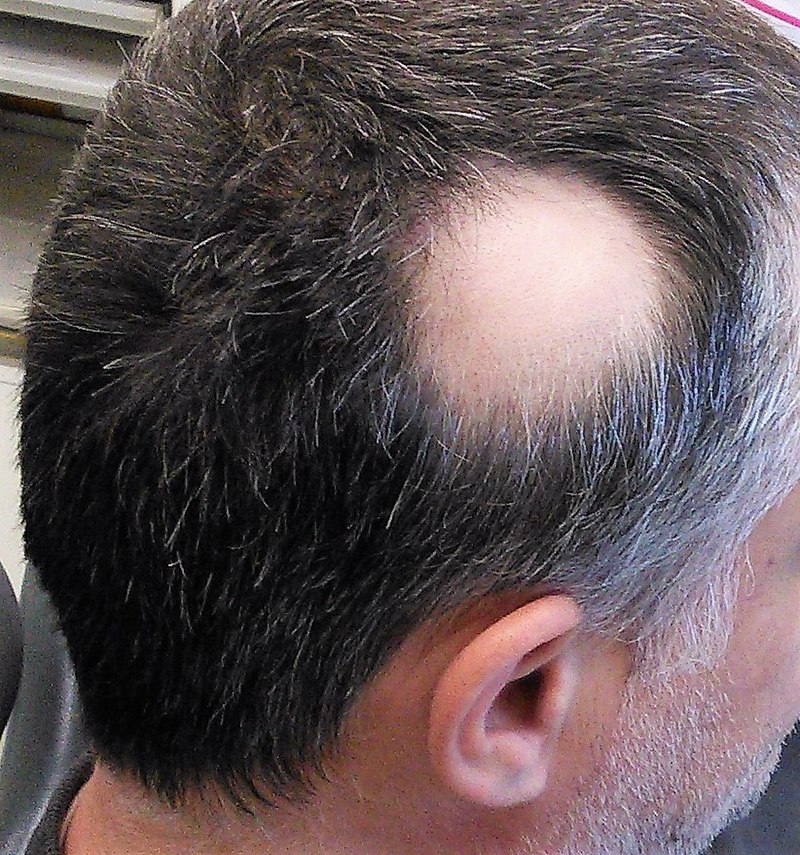Playlist
Show Playlist
Hide Playlist
Quick Review: Alopecia
-
Slides Alopecia.pdf
-
Reference List Dermatology.pdf
-
Download Lecture Overview
00:01 Alright, now we can move on to a quick review. 00:03 So I'll ask a question, you can pause the screen and come up with the answer on your own and then we'll go ahead and review the answer. 00:11 All of the following are common causes of telogen effluvium except? Okay, bariatric surgery - very common cause. 00:26 hypothyroidism - also something that we could see Cutaneous lupus erythematosus. 00:32 As we discussed before, that is one of the cicatricial causes of alopecia, scarring type with lots of inflammation, it's not gonna cause telogen effluvium. 00:42 Malnutrition and pregnancy however are definitely on our list of stressors that can cause telogen effluvium. 00:47 So our answer is number 3 Next question. 00:51 Which of the following is true of alopecia areata? Okay, so commonly associated with systemic scleroderma? Not so much. 01:07 You'd really see it with autoimmune conditions such as Hashimoto's thyroiditis, Addison's, vitiligo. 01:13 So that's false. 01:14 Number 2 - Affected lesions often resolve with scarring That's also false, there's actually no evidence of inflammation, grossly visual on the scalp . 01:23 Number 3. 01:24 May be treated with topical azole shampoos. 01:27 That's gonna be how you would treat tinea captitis but not alopecia areata, you'd use steroids for alopecia areata. 01:35 Number 4- is commonly associated with nail pitting. 01:38 Well that's true actually, nail pitting we oftentimes think of as with psoriasis but you can also see it with alopecia areata especially if you also see evidence of nail dystrophy. 01:48 And lastly, lesions tend to be symmetrically distributed As we talked about before, alopecia areata kind of picks different areas of the scalp at random and there's no symmetry to it whatsoever. 01:58 So our answer is clearly number 4. 02:03 Last question, an 8-year old girl presents with a focal area of hair loss as shown. 02:09 The lesion is pruritic and the exam reveals some broken hair shafts, mild erythema and scale. 02:16 What's the most likely diagnosis? Totally not fair. 02:27 We didn't even cover tinea capitis in any detail. 02:29 But that's exactly what this is. 02:31 It's a relatively common dermatophyte infection in preadolescent kids. 02:35 Now if left untreated, it can progress to a scarring alopecia but usually if you catch it early, it should resolve completely with treatment. 02:43 Now unlike some other tinea infections, tinea capitis almost always requires oral treatment. 02:48 with for example oral ketoconazole or fluconazole. 02:52 Though you can certainly tro and get by with a shampoo at first That's the end of our questions.
About the Lecture
The lecture Quick Review: Alopecia by Stephen Holt, MD, MS is from the course Miscellaneous Skin Disorders.
Included Quiz Questions
Which of the following is a common cause of telogen effluvium?
- Pregnancy
- Autoimmune disease
- Chemotherapy
- Dermatophyte fungus
- Hyperandrogenism
Which of the following is associated with alopecia areata?
- Nail pitting
- Scarring alopecia
- Dermatophyte infection
- Treated with spironolactone
- Diffuse hair loss
Customer reviews
5,0 of 5 stars
| 5 Stars |
|
5 |
| 4 Stars |
|
0 |
| 3 Stars |
|
0 |
| 2 Stars |
|
0 |
| 1 Star |
|
0 |




